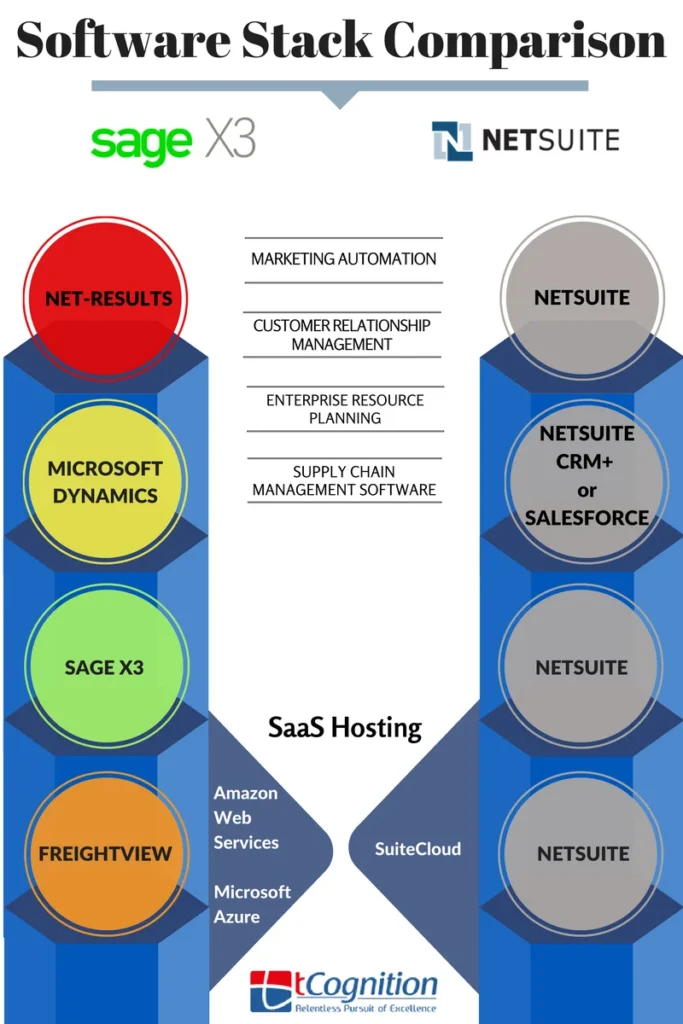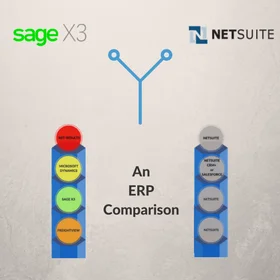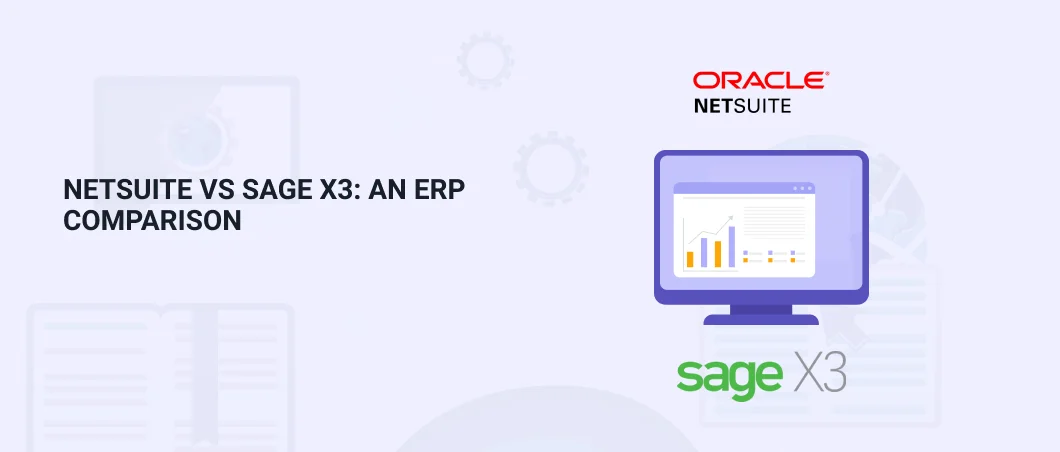Both NetSuite and Sage X3 are two of the most asked about ERP solutions on the market today. While NetSuite might be getting more press because of Oracle’s recent acquisition, it would be a mistake to write off the growth of Sage and its flagship product in Sage X3. There are some clear differentiators between the two products, so we decided to create this head-to-head ERP software comparison (and a more in-depth NetSuite vs Sage X3 white paper here).
NetSuite vs Sage X3 Deployment Differences
Sage X3 can be hosted on-premise or on the cloud (through Amazon Web Services or similar solution), whereas NetSuite is only available on its internal cloud (SuiteCloud). There are benefits and drawbacks to each deployment method. Some companies can’t handle the exhaustive transfer of data to NetSuite’s cloud. Going on-premise with Sage X3 does require a higher upfront cost. However, it may be a more flexible deployment option in a hybrid environment (combinations of on-premise and cloud systems). Products in the cloud environment overall tend to promote more flexibility. Whether deployed on-premise or cloud, Sage X3 implementations tend to be less costly than NetSuite and have a shorter go-live time.
Sage X3 has made strides with its cloud capabilities, and with the launch of 7.0 is fully capable as a multi-tenant platform. Sage has also addressed concerns about a lack of third-party apps by implementing RAD (Rapid Application Deployment). Creating updates and add-ons has become much more agile than in the past.

NetSuite vs Sage X3 Integration Comparison
Wherever the initial decision on deployment lands, both NetSuite and Sage rarely cover all aspects of any given business’s financial practices. Generally speaking, businesses have a multitude of third-party apps and patchwork solutions (i.e. barcoding/warehousing apps) in conjunction with their ERP solution. Often this can lead to integration issues and general user unhappiness.
Depending on your mindset, this can lead you down two paths. One might lead to NetSuite, which is an all-in-one solution. This can lead to difficulties if you are using a number of external business applications and need to integrate. But with its relatively full suite of options, you will likely have enough functionality. There is native integration with Salesforce, but generally, your path will be concrete.
If you think this is too much of a monolithic solution, Sage X3 offers more integration options. In general, we also noticed pages and dashboards in NetSuite run noticeably slower than Sage X3. X3 is a more agile platform from which to optimize into a best-of-breed stack. If integration and flexibility are more important to you, Sage X3 is probably where you should lean.


